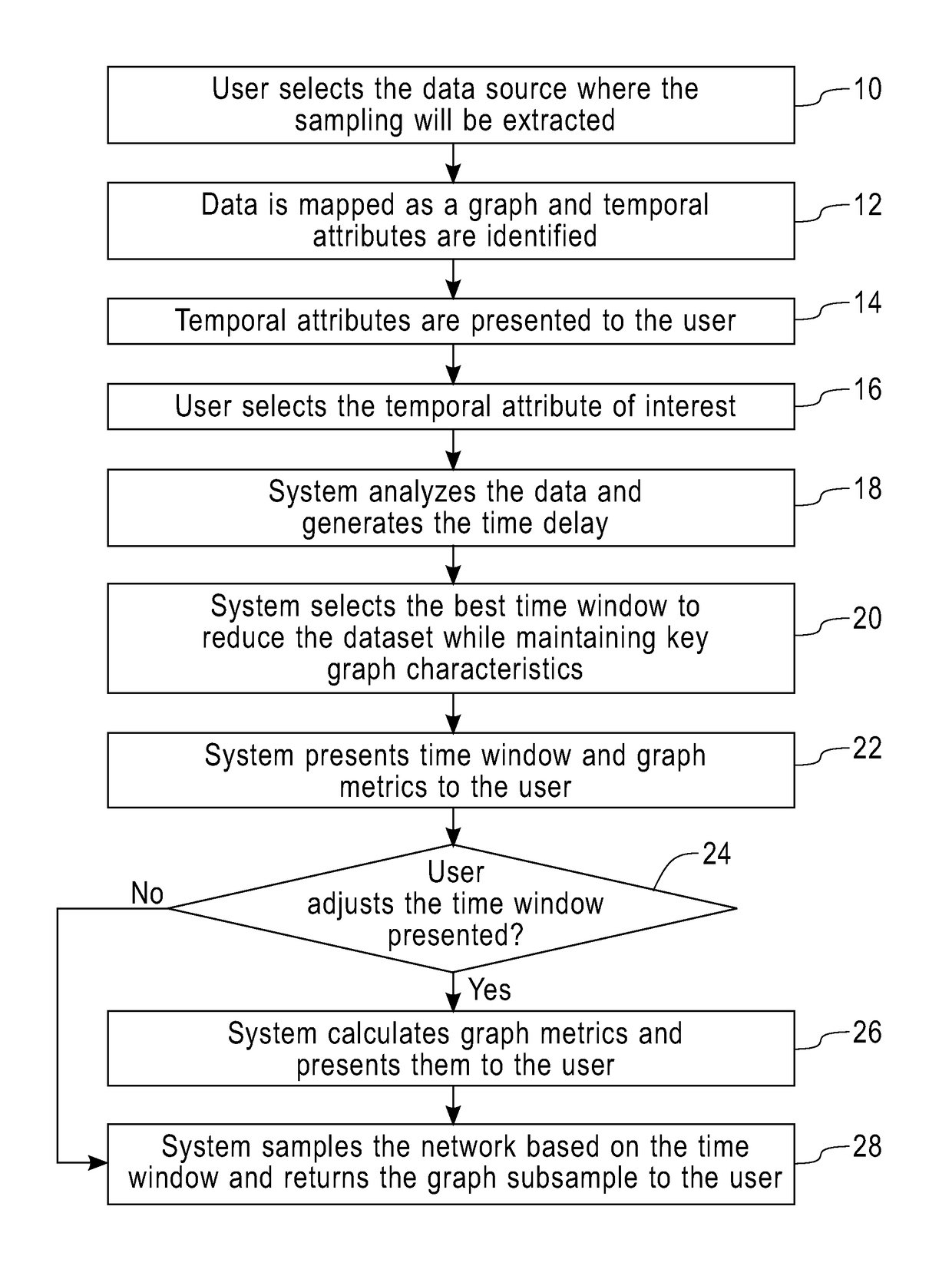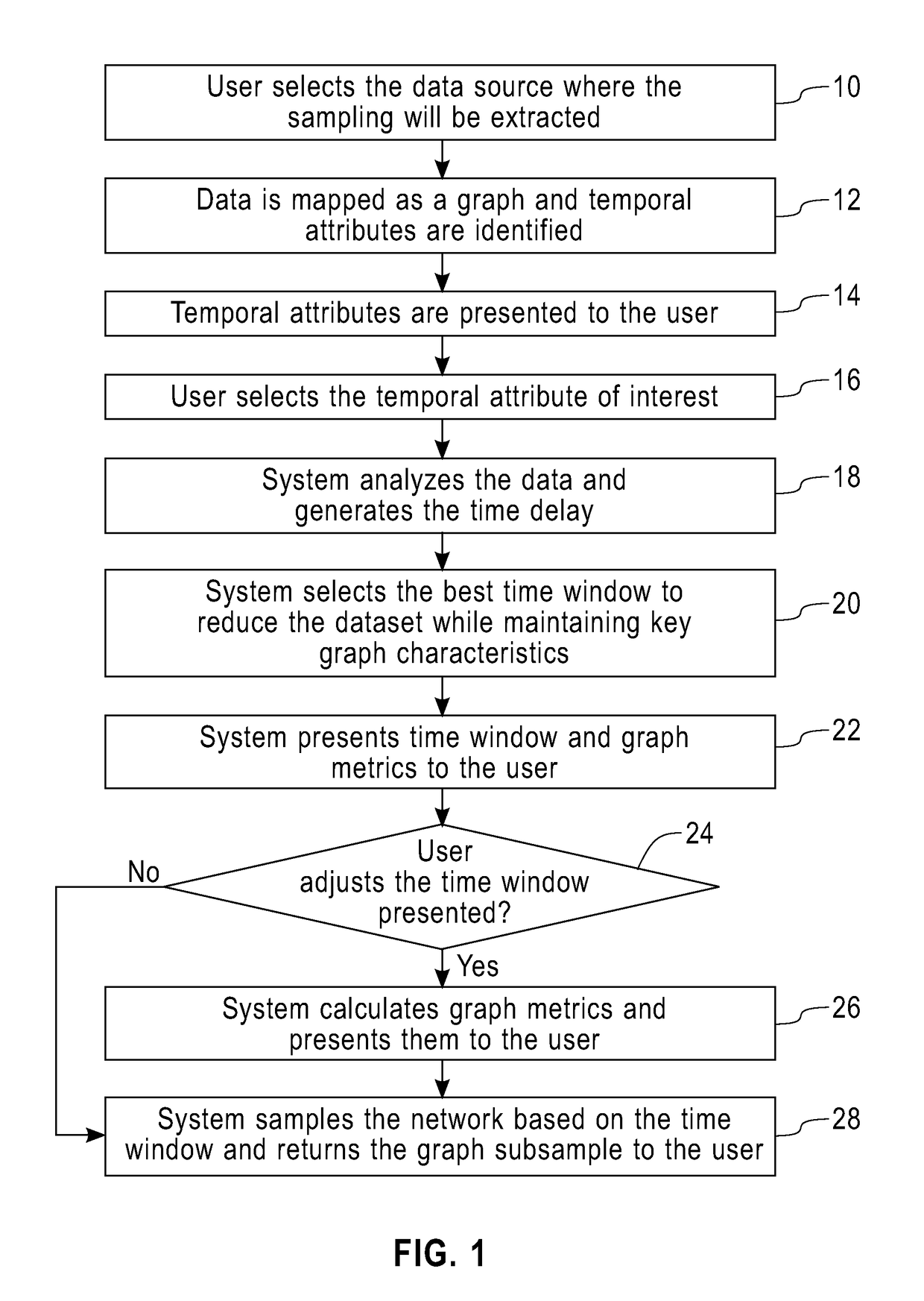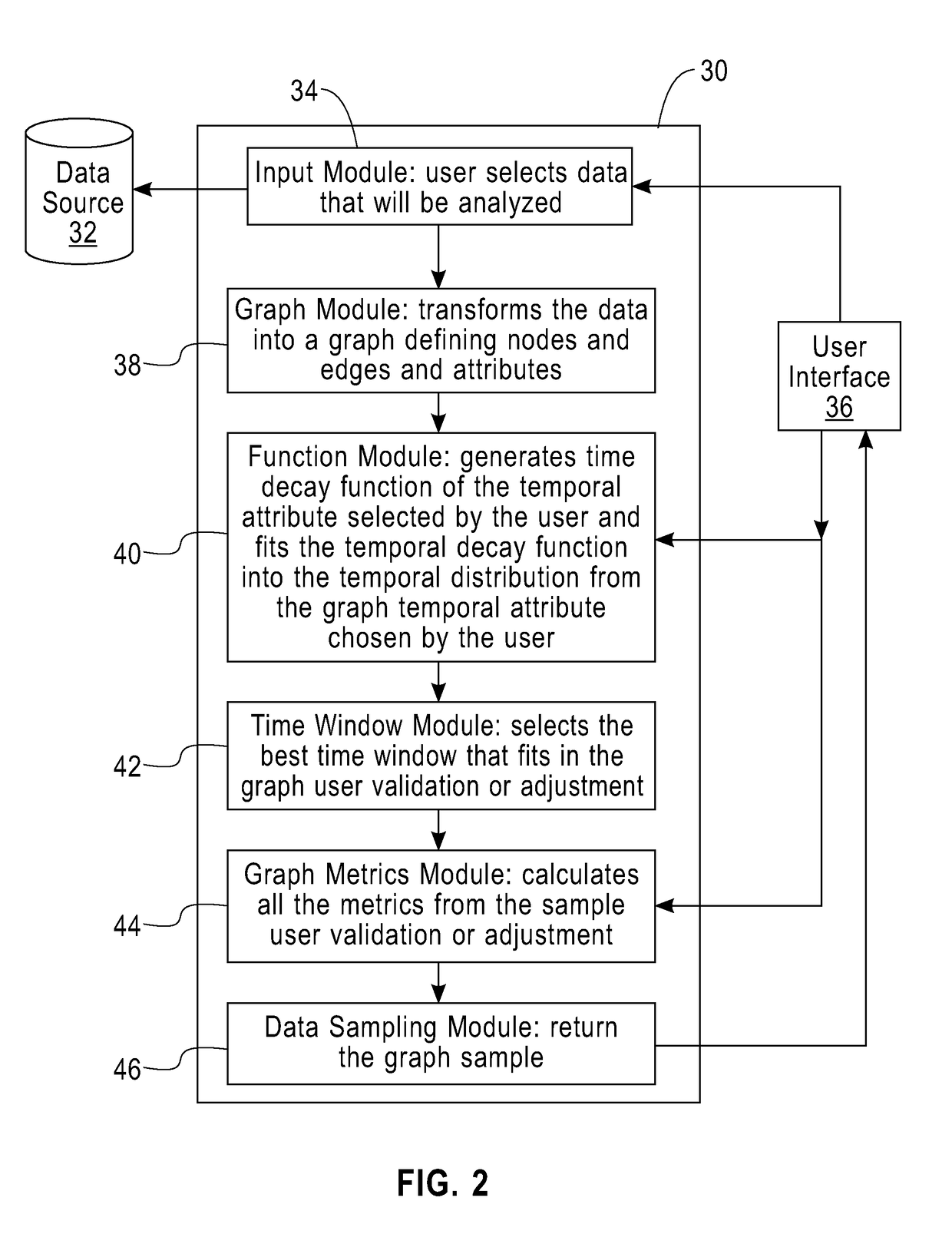Method and system for temporal sampling in evolving network
a technology of evolving networks and methods, applied in the field of temporal data analysis, can solve the problems of reducing the size of the network, affecting the quality of the data, and the inability to manage the size of the resulting dataset,
- Summary
- Abstract
- Description
- Claims
- Application Information
AI Technical Summary
Benefits of technology
Problems solved by technology
Method used
Image
Examples
Embodiment Construction
[0017]As noted above, one of the main problems involved in temporal sampling is how to define the granularity of the sampling (i.e., which is the optimal time window for sampling: years, months, hours, etc.). One embodiment of the present invention is a method and a system that, for a given network, analyzes the decay of information and produces a function in order to estimate the granularity of an optimal data sample. Once that the decay and granularity are identified, a sample is generated as a subset of the original network preserving as much as possible those characteristics that are important for a set of tasks, such as link prediction or community detection.
[0018]The method and system disclosed provides a solution to process a large volume of data represented as a graph of a complex network and output a temporal sample of this data that reduces the amount of data to be analyzed, but keeps all the important properties such as degree distribution, distance, such as number of hop...
PUM
 Login to View More
Login to View More Abstract
Description
Claims
Application Information
 Login to View More
Login to View More - R&D
- Intellectual Property
- Life Sciences
- Materials
- Tech Scout
- Unparalleled Data Quality
- Higher Quality Content
- 60% Fewer Hallucinations
Browse by: Latest US Patents, China's latest patents, Technical Efficacy Thesaurus, Application Domain, Technology Topic, Popular Technical Reports.
© 2025 PatSnap. All rights reserved.Legal|Privacy policy|Modern Slavery Act Transparency Statement|Sitemap|About US| Contact US: help@patsnap.com



